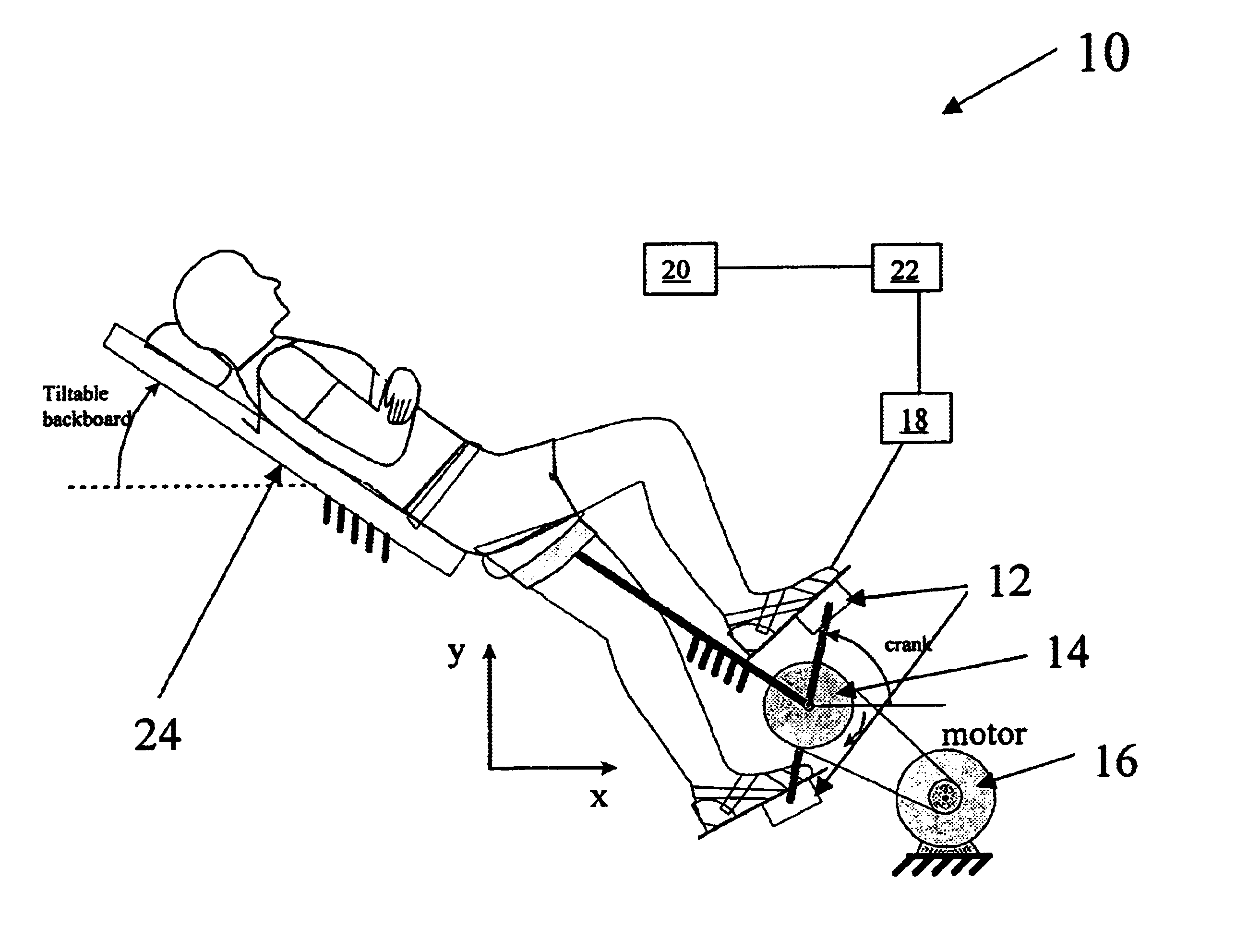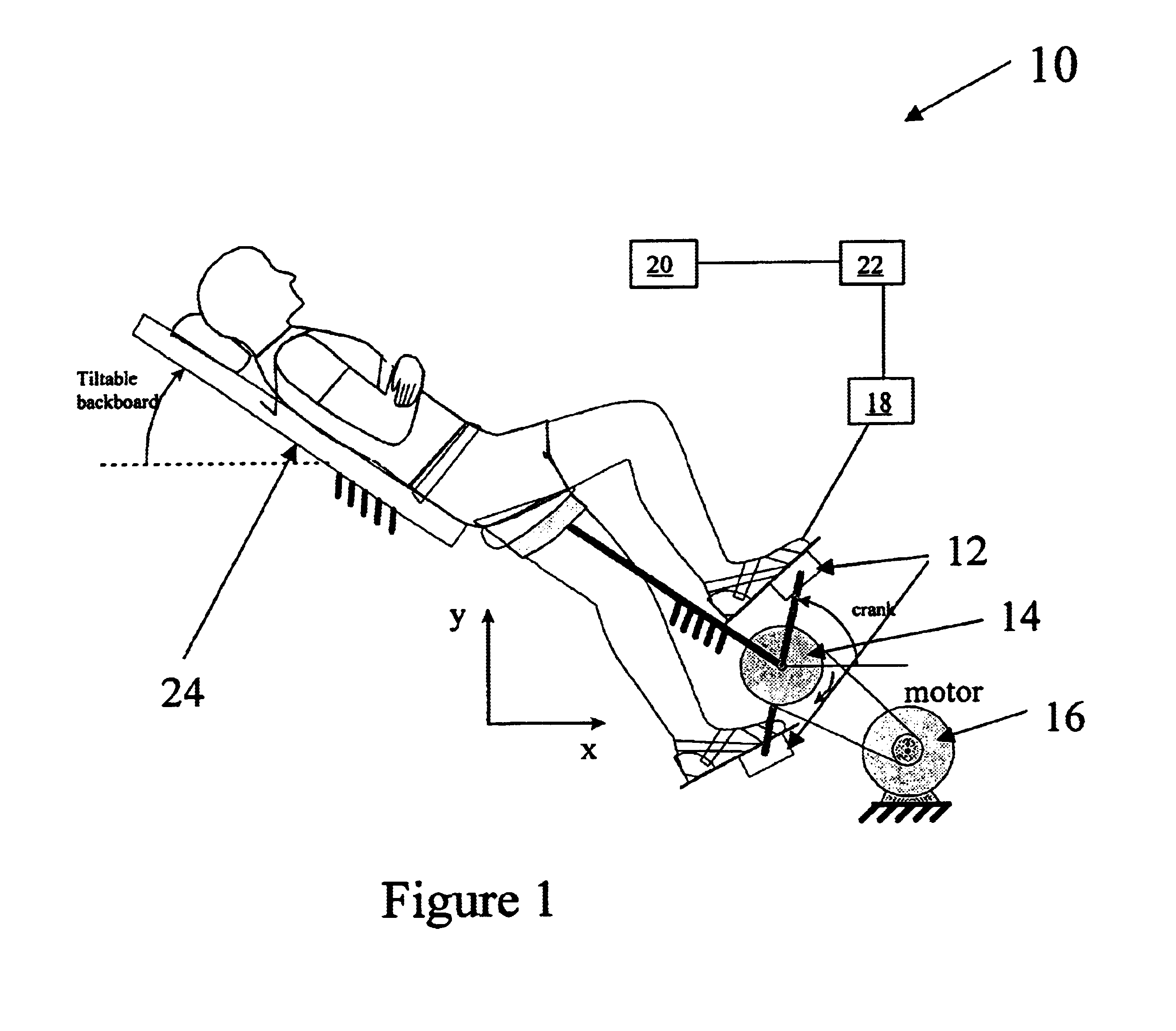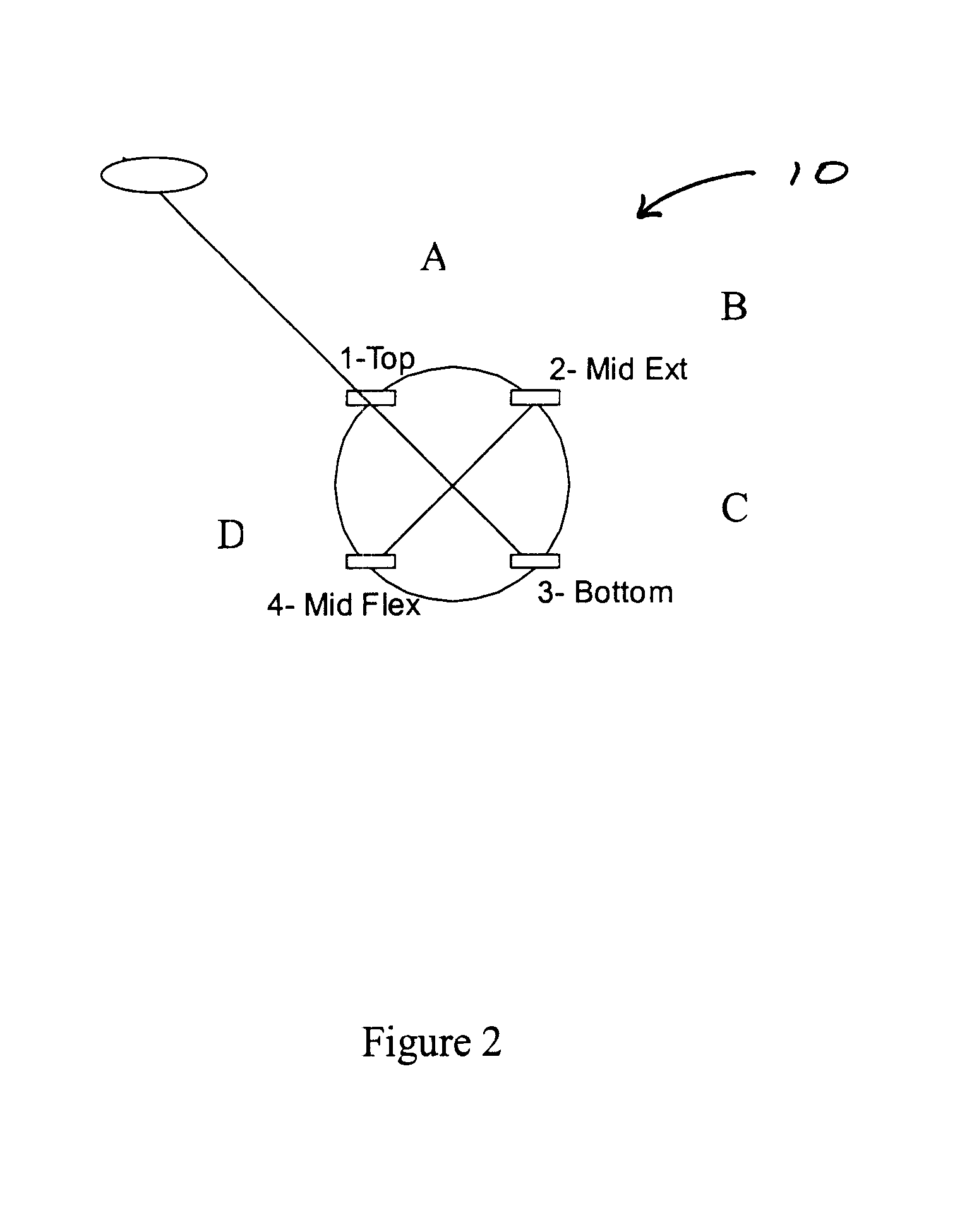Methods and system for assessing limb position sense during movement
a technology of limb position and sense, applied in the field of limb position sense, can solve the problems of not directly testing the ability of a person to sense, and the locust cannot maintain the normal flight rhythm, so as to improve the use or perception of existing proprioceptive signals during movemen
- Summary
- Abstract
- Description
- Claims
- Application Information
AI Technical Summary
Benefits of technology
Problems solved by technology
Method used
Image
Examples
example 1
As mentioned above, limb position sense is the ability to sense the movement and position of limbs. Clinically, limb position sense is determined in the prior art by either single joint position sense or "mirroring" of positions which are both static, single joint measurements. However, recent studies have shown that limb position sense is important during locomotor function and particularly important during certain phases of the locomotor cycle. The study of this example was undertaken, in part, to determine if limb position sense is 1) more accurate during cyclic leg movement, compared with static placement of the leg and 2) more accurate during phase transitions during cyclic pedaling (i.e., when the limb position is changing from flexion to extension and vice versa) compared with full extension or flexion.
Subjects: Sixteen healthy subjects ranging in age from 20-45 years with no known pathologies participated (mean age=26.4+ / -4.69 years).
Methods: With references to FIG. 1, each ...
example 2
Population. Experiments were performed using 16 healthy subjects ranging in age from 20-45 years and recruited from the surrounding community (mean age=26.4+ / -4.69 years). Subjects were chosen based on their health status and capabilities in pedaling a bicycle ergometer. None of the subjects were professional cyclists. The subjects reported no signs or symptoms of orthopedic impairment, cardiovascular or neurological disease. All subjects gave informed consent, and Northwestern University Institutional Review Board approved the study.
Apparatus. With reference to FIGS. 1 and 2, a standard bicycle ergometer was modified with eight sensors, which were placed along the frame of the ergometer just above the crank. These eight sensors corresponded with 30.degree. intervals between -30.degree. and 210.degree.. A microphone, specially designed for this experiment, was utilized during a portion of this experiment. Whenever the percussive word "Bob" was pronounced into the microphone, an elec...
PUM
 Login to View More
Login to View More Abstract
Description
Claims
Application Information
 Login to View More
Login to View More - R&D
- Intellectual Property
- Life Sciences
- Materials
- Tech Scout
- Unparalleled Data Quality
- Higher Quality Content
- 60% Fewer Hallucinations
Browse by: Latest US Patents, China's latest patents, Technical Efficacy Thesaurus, Application Domain, Technology Topic, Popular Technical Reports.
© 2025 PatSnap. All rights reserved.Legal|Privacy policy|Modern Slavery Act Transparency Statement|Sitemap|About US| Contact US: help@patsnap.com



